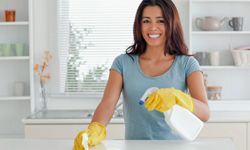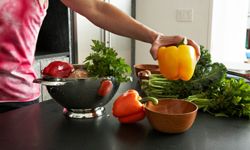Key Takeaways
- For an environmentally friendly disinfecting method, use a combination of vinegar and hydrogen peroxide sprayed separately onto countertops to effectively kill germs without harsh chemicals.
- Ensure hydrogen peroxide is stored in a dark spray bottle to maintain its effectiveness, as exposure to light degrades the solution.
- This nontoxic cleaning approach doesn't require rinsing, and the vinegar smell dissipates quickly, leaving surfaces both sanitized and safe for use.
You've probably read that your kitchen may be the dirtiest room in your home. That shouldn't be any big surprise. You use it for food preparation, and where there's food, there's bacteria. Food doesn't have to be rotten to become a breeding ground for bacteria, either. Refrigerated items that have been left at room temperature for more than two hours can become a banquet for microscopic invaders and still look and smell safe to eat. The same goes for that smudge of leftover mayo on your countertop.
But there's plenty of cause for concern. Upwards of 76 million cases of food-related illness are reported across the U.S. every year. That's from all causes, but it's still a huge figure. Maintaining a clean kitchen and handling food carefully are a couple of ways you can help keep your family safer. Those locations in your kitchen that come in direct contact with food should get the most attention. Surfaces like your kitchen countertops and sink should be cleaned every time you use them. On the next pages, we'll take a look at five ways you can keep your countertops sparkling -- and free of harmful bacteria.
Advertisement


